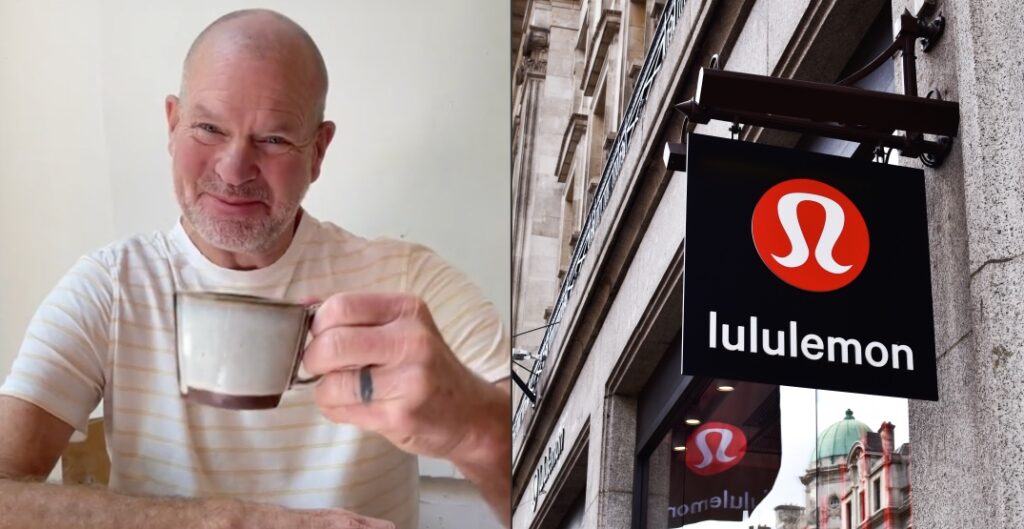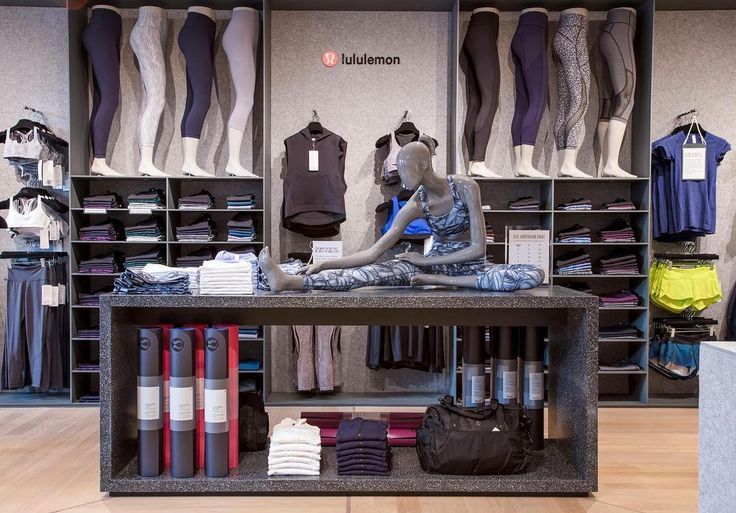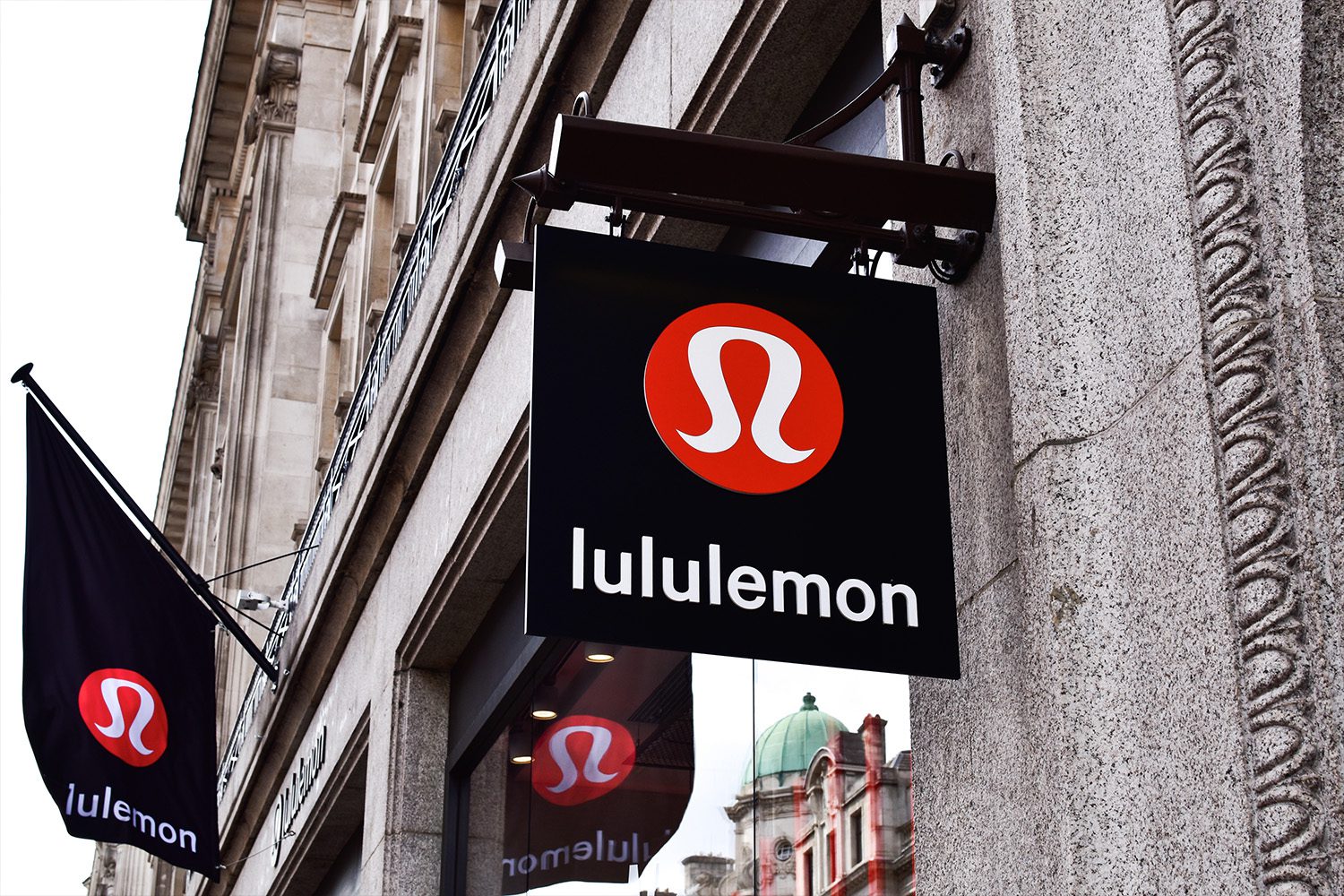Lululemon Athletica, commonly known as Lululemon, is a dynamic and innovative athletic apparel brand that has made a significant impact on the fitness and fashion industries. Founded in 1998 in Vancouver, Canada, Lululemon has rapidly grown into a global phenomenon, captivating the hearts of athletes, fitness enthusiasts, and fashion-conscious individuals alike. With a commitment to blending high-performance athletic wear with stylish designs, Lululemon has redefined the boundaries of activewear and established itself as a lifestyle brand that transcends the gym.
The company is headquartered in Vancouver, British Columbia, and has over 650 stores in over 18 countries.
Lululemon is known for its high-quality yoga apparel, as well as its other athletic wear for men, women, and children. The company’s products are designed to be both stylish and functional, and they are often used by athletes and fitness enthusiasts.
Lululemon’s marketing strategy is focused on creating a sense of community among its customers. The company’s stores are designed to be welcoming and inviting, and its employees are often seen as experts in the world of fitness. Lululemon also sponsors a number of yoga and fitness events, which helps to promote the brand and its products.
Lululemon has been very successful in recent years. The company’s revenue has grown steadily, and it is now one of the leading athletic apparel brands in the world. Lululemon’s success is due in part to its focus on quality, design, and community.
Founding History of Lululemon
The roots of Lululemon Athletica can be traced back to the early 1990s when founder Chip Wilson recognized a gap in the market for high-quality and fashionable athletic wear. The brand’s journey from a single store to a global phenomenon is a tale of innovation, dedication, and a passion for blending athletic performance with lifestyle fashion. Let’s delve into the founding history of Lululemon in detail:
The story of Lululemon began in 1998 when Chip Wilson, a Canadian entrepreneur and fitness enthusiast, found himself searching for durable and stylish workout clothing for his active lifestyle. Disappointed with the lack of options available, Wilson identified an opportunity to create a brand that combined performance-driven fabrics with contemporary designs, catering to athletes and fitness enthusiasts seeking both functionality and fashion.

Armed with his vision, Wilson established Lululemon Athletica in November 1998 in Vancouver, Canada. The name “Lululemon” itself reflects the brand’s playful and optimistic approach. Wilson chose “Lululemon” after being told that Japanese people struggle to pronounce the letter “L,” giving the name a memorable and unique touch.
In the early 2000s, Lululemon gained significant traction as the popularity of yoga surged across North America. The brand saw an opportunity to create yoga-specific clothing that not only offered exceptional comfort and flexibility but also embraced a fashion-forward aesthetic. This innovative focus on yoga wear allowed Lululemon to stand out in the athletic apparel market and connect with a growing community of yoga practitioners.
Lululemon’s success is also attributed to its distinctive marketing approach. The brand’s signature “Lululemon Manifesto,” a collection of inspirational quotes and statements, adorned its shopping bags and store walls. The manifesto emphasized values such as self-improvement, community, and mindfulness, fostering a deeper connection with customers beyond the products themselves.

As Lululemon continued to thrive, it diversified its product offerings beyond yoga wear to cater to various athletic pursuits. The brand expanded its collections to include running apparel, training gear, swimwear, and lifestyle clothing that seamlessly blended fitness functionality with contemporary style.
: Lululemon’s in-store experience became a defining feature of the brand’s success. The company’s stores hosted complimentary yoga classes and fitness events, creating a sense of community and camaraderie among customers. The “Sweatlife” philosophy, centered around embracing an active and balanced lifestyle, was deeply ingrained in the brand’s culture.
The early 2000s saw Lululemon expanding its footprint beyond Canada’s borders. The brand ventured into the United States and established a significant presence in key markets across Europe, Asia, and Australia. The brand’s global expansion further solidified its reputation as a leading athleisure icon.
The founding history of Lululemon is a tale of recognizing untapped potential, creating a brand synonymous with athleisure, and fostering a community-driven culture. Through its dedication to innovation, quality, and stylish designs, Lululemon has emerged as a global icon that effortlessly balances athletic performance with contemporary fashion. As the brand continues to inspire individuals to lead active and fulfilling lives, its founding vision of blending athletic excellence with lifestyle fashion remains at the heart of its enduring success.
Marketing Strategies of Lululemon: A Fusion of Athletic Excellence and Lifestyle Appeal
Lululemon Athletica, commonly known as Lululemon, has earned a prominent position in the global athleisure market through its effective marketing strategies. The brand’s success lies in its ability to seamlessly blend athletic performance with fashionable designs, appealing to both fitness enthusiasts and style-conscious consumers. Let’s explore the key marketing strategies employed by Lululemon in detail:
Brand Identity and Lifestyle Marketing:
Lululemon’s marketing strategy is built around creating a strong brand identity and embracing a lifestyle approach. The brand focuses on promoting an active and balanced lifestyle, encouraging customers to embrace fitness, yoga, and wellness as an integral part of their lives. By positioning itself as more than just an athletic apparel retailer, Lululemon fosters a sense of community and belonging among its customers, inspiring them to lead healthier and fulfilling lives.
Brand Identity:
Lululemon defines itself as a premium athletic apparel brand that embodies healthy living, mindfulness, and environmental responsibility. Its logo features a stylized “L” resembling a mountain peak, symbolizing the connection between inner peace and outer performance. This design choice aligns with the brand’s commitment to sustainability and adventure.
To maintain consistency across all touchpoints, Lululemon adheres to a clean and modern color palette, typography choices, and photographic styles. The brand’s packaging, store interiors, digital assets, and advertising materials feature similar aesthetics, communicating a unified message and fostering brand recognition.

Lifestyle Marketing:
Lululemon positions itself less as just another sportswear label but rather as a catalyst for positive change. Through its #theselfcare movement, the brand encourages self-care practices such as meditation, journaling, and yoga, while highlighting the importance of mental wellbeing alongside physical fitness.
Through partnerships with ambassadors and influencers who embody the Lululemon ethos, the brand showcases its products within real-life contexts. Whether sharing stories of overcoming challenges or demonstrating the versatility of Lululemon gear for various activities, these individuals help illustrate how the brand can contribute positively to people’s lives.
Lululemon’s experiential marketing initiatives further amplify its mission to inspire healthier, happier communities. Pop-up events like “Sunset Sessions,” where participants engage in group fitness classes followed by sunset yoga sessions, bring the brand’s philosophy to life.
Lululemon understands that creating a thriving community is essential to its success. To achieve this goal, the brand regularly hosts free educational events at stores worldwide called “The Hub.” These interactive experiences cover topics ranging from nutrition and sleep science to stress management and mindfulness techniques.
In addition, Lululemon collaborates with local studios, instructors, and organizations to host pop-ups and immersions. These events often include complimentary yoga classes, panel discussions, and networking opportunities. By partnering with likeminded entities, Lululemon expands its reach and solidifies its position as a leader in promoting active, balanced lifestyles.
Overall, Lululemon’s brand identity and lifestyle marketing efforts focus on empowering individuals to live their best lives. By fostering meaningful connections and supporting customers in achieving their goals, Lululemon establishes enduring relationships and remains a trusted ally in the quest for fulfillment.
Targeting Specific Segments:
Lululemon’s marketing efforts are tailored to target specific customer segments. The brand primarily caters to fitness enthusiasts, yoga practitioners, and individuals seeking comfortable and stylish activewear for their active pursuits. By understanding the unique needs and preferences of these segments, Lululemon designs and markets products that align with their lifestyle choices.
Lululemon recognizes that not everyone desires the same level of technicality or functionality in workout clothes. Therefore, it divides its customer base into three categories based on activity levels:
Casual/Light Activity – For those primarily focused on leisure wear or occasional exercise.
Active/Moderate Activity – For those participating in regular workouts or outdoor recreation.
Performance/Intense Activity – For high-performance athletes engaged in competitive sports or demanding training regimens.
By segmenting its clientele, Lululemon ensures each group receives appropriate options suited to their needs without overwhelming them with unnecessary features or price points.
Product Offerings:
Correspondingly, Lululemon develops separate lines catering to every tier of athlete. The company offers its “Lab” collection for elite performers requiring advanced technology and durability. Meanwhile, its “Wanderlust” line caters to travelers seeking lightweight, compact pieces ideal for packing. Additionally, Lululemon introduces seasonal collections incorporating fashion trends and unique fabrics to attract casual shoppers looking for stylish yet functional attire.
Influencer and Community Marketing:
Lululemon leverages influencer and community marketing strategies to expand its reach and connect with potential customers. Here’s how they implement these tactics:
Influencer Marketing Strategy:
Collaborations with Micro-influencers: Lululemon partners with micro-influencers who embody the brand’s values and resonate with its target demographics. These individuals showcase Lululemon products in authentic ways, sharing their personal stories and experiences related to living an active, balanced lifestyle. Their genuine enthusiasm creates relatable content that appeals to prospective buyers.
Ambassador Program: Lululemon selects brand ambassadors representing various backgrounds and interests, such as professional athletes, artists, and entrepreneurs. They serve as role models within their respective fields and demonstrate how Lululemon apparel supports their passions. Through shared stories and expertise, ambassadors help promote the brand’s message of self-expression and achievement.
Experiential Events: Lululemon organizes exclusive gatherings featuring prominent figures from various industries. Attendees interact with one another, learn about new practices for enhancing well-being, and experience Lululemon’s latest innovations firsthand. These intimate encounters create lasting impressions and encourage word-of-mouth recommendations among influential individuals.


Community Marketing Strategy:
Local Store Engagement: Each Lululemon location fosters strong bonds with nearby communities by hosting activities and events that align with the brand’s ethos. Customers can attend meditation circles, running clubs, and other grassroots happenings designed to cultivate camaraderie and shared interests. These interactions reinforce Lululemon’s commitment to building tight-knit neighborhoods centered around positive change.
Online Communities: Lululemon maintains dedicated digital platforms where members can connect, ask questions, and receive advice from fellow enthusiasts. These virtual hubs facilitate cross-pollination of ideas and perspectives, allowing users to feel supported in their journeys towards wellness.
Visual Merchandising and In-Store Experience:
Lululemon leverages visual merchandising by designing visually appealing displays that reflect the brand’s ethos of balance, simplicity, and functionality. Store layouts are clean and spacious, allowing ample room for maneuvering and trying on clothes. Products are neatly organized and color-coded by category (e.g., pink for feminine, blue for masculine). Signage is minimalistic yet impactful, using bold fonts and concise messaging to guide customers around the store. Lighting is warm and natural, mimicking sunlight filtering through windows or skylights. Overall, the store atmosphere exudes calmness and positivity, encouraging visitors to explore and discover new products.

The in-store experience complements visual merchandising efforts by fostering meaningful interactions between employees and customers. Friendly staff members greet everyone upon arrival, asking if they need assistance or simply wishing them a great day. Employees model Lululemon apparel themselves, demonstrating confidence and comfort in the brand’s products. Interactive elements like meditation nooks or yoga mats allow customers to test products and envision incorporating them into their daily lives.
During seasonal changes or product launches, Lululemon stages pop-up installations that double as both functional displays and interactive experiences. Recent examples include a “Self Care Rx” station featuring relaxation areas with scented candles, calming music, and herbal tea; or a “Hydrate Your Life” zone that offered infused waters and recipe ideas for post-workout refreshments. Another example could be a “Sustainable Living” installation that highlights eco-friendly products and provides tips for reducing waste at home.
These types of installations not only enhance the overall in-store experience but also educate customers on different ways to live a healthier lifestyle beyond just physical exercise. By providing educational content and hands-on experiences, Lululemon positions itself as a thought leader in wellness and sustainability, further solidifying its reputation as a premium activewear brand.
Embracing Digital and E-commerce:
Lululemon leverages digital marketing to engage with its tech-savvy customers. The brand maintains a strong presence on various social media platforms, including Instagram, Facebook, Twitter, and TikTok. It shares content related to fitness, wellness, and lifestyle, connecting with its audience on a personal level. Additionally, Lululemon’s user-friendly e-commerce platform allows customers to shop conveniently online, offering a seamless and accessible shopping experience.
Here’s how Lululemon uses digital and e-commerce as part of its marketing strategy:
Online Presence:
Lululemon maintains a strong online presence across various social media platforms such as Instagram, Facebook, Twitter, Pinterest, TikTok, etc. They regularly share user-generated content along with their own posts showcasing fitness routines, healthy meals, and inspirational quotes related to self-care and personal growth. Their website serves as a hub for all information about the brand, including product descriptions, pricing, sizing guides, shipping policies, and return procedures.
Email Marketing Campaigns:
Lululemon sends out regular newsletters to subscribers featuring curated collections, special deals, event invitations, and community updates. Customized email campaigns target specific segments based on purchase history, browsing activity, or geographic location. For instance, welcome emails introduce first-time subscribers to the brand’s mission and values, while abandoned cart reminders encourage users to complete their purchases.
Virtual Events and Workshops:
Lululemon organizes virtual workouts, meditation sessions, cooking classes, and panel discussions featuring experts in fields relevant to its audience. These events promote engagement and interaction among participants via live chat or video conferencing tools. Attendees receive insider knowledge and connect with others who share similar interests, fostering a sense of belonging within the Lululemon community.
Social Media Contests and Giveaways:
To generate buzz and increase follower counts, Lululemon runs contests and giveaways on social media platforms. Participants must tag friends or share photos/videos related to the prompt for a chance to win prizes like clothing bundles, gift cards, or exclusive experiences. These campaigns leverage user-generated content and word-of-mouth referrals to expand reach and attract new customers.
Mobile App Integration:
Lululemon’s mobile application allows users to track workouts, set goals, view past orders, and access rewards programs directly from their smartphones. The app syncs data seamlessly across devices and stores, ensuring a smooth shopping journey for customers. Users can save favorite items, create wish lists, or request notifications when desired products become available again. This integration streamlines the customer experience and keeps individuals engaged with the brand even outside of brick-and-mortar locations.
Lululemon leverages digital channels and e-commerce strategies to extend its impact far beyond physical storefronts. By embracing technology and adapting to evolving consumer preferences, the brand remains accessible and appealing to an increasingly diverse range of people pursuing healthy lifestyles worldwide.
Lululemon’s marketing strategies revolve around creating a lifestyle brand that blends athletic excellence with fashionable designs. By fostering a sense of community, emphasizing product quality and innovation, engaging with influencers, and promoting an active and balanced lifestyle, Lululemon has positioned itself as a global leader in the athleisure industry. The brand’s marketing efforts align seamlessly with its mission to inspire individuals to live healthier, active, and empowered lives, reinforcing Lululemon’s position as a trailblazing force in the world of athletic apparel.
Marketing Mix of Lululemon
The marketing mix, also known as the 4Ps (Product, Price, Place, and Promotion), plays a crucial role in Lululemon’s success as a global athleisure brand. By carefully integrating its product offerings, pricing strategies, distribution channels, and promotional efforts, Lululemon has become a trailblazer in the athletic apparel industry. Let’s explore each element of Lululemon’s marketing mix in detail:
Product Strategy:
Lululemon offers high-quality athletic wear designed for yoga, running, training, and other activities. Its focus is on creating technical fabrics that wick moisture away from skin, offer UPF protection against harmful UV rays, and stretch comfortably without losing shape. Product lines include men’s, women’s, and kids’ apparel, as well as accessories like bags, hats, gloves, and water bottles. In addition, seasonal collections feature limited edition prints and colors inspired by nature, art, and cultural trends.
Pricing Strategy:
Lululemon sets prices competitively compared to rival brands like Nike, Adidas, Under Armour, and Athleta. However, it does charge slightly higher rates due to its commitment to using premium materials and ethical manufacturing practices. Prices vary depending on category (e.g., pants cost more than tanks), fabric composition (e.g., nylon blend vs. cotton blend), and design complexity (e.g., printed patterns vs. basic solids). Regular sales and discounts are offered throughout the year to keep inventory moving and entice customers to try new styles or upgrade existing ones.
Promotion Strategy:
Lululemon employs several tactics to raise awareness and drive sales through advertising, public relations, influencer partnerships, and grassroots efforts. Key methods include:
- Content Marketing: Creating blog articles, videos, podcasts, and social media posts focused on wellness topics like nutrition, sleep, stress management, mental health, and environmental responsibility.
- Community Building: Hosting local events and meetups centered around group fitness activities, volunteer opportunities, and charity initiatives. Ambassadors lead these gatherings and serve as role models for aspirational living.
- Experiential Marketing: Designing immersive retail spaces that double as community centers where visitors can attend free classes, participate in workshops, and interact with trained staff members who embody the brand’s core values. Pop-up shops and showrooms appear during key seasons like back-to-school or holidays to draw foot traffic and capture impulse purchases.
Place Strategy:
Lululemon maintains a strong presence at malls, downtown areas, and tourist destinations to maximize visibility and convenience for consumers. Store sizes average between 2,000 and 6,000 square feet, accommodating ample room for displays, fitting rooms, and community spaces. Locations often have unique architectural features or design elements reflecting regional influences or sustainable building techniques. Efforts are made to reduce carbon footprints by incorporating recycled materials, energy-efficient lighting, and green cleaning supplies into operations.
Lululemon sells merchandise primarily through its own e-commerce website and approximately 500 company-owned stores globally. It also wholesales select product lines to department stores, boutiques, and online retailers. Omnichannel fulfillment options allow customers to pick up online orders in-store or ship them to nearby locations if stock isn’t readily available. A growing number of international markets receive direct-to-consumer deliveries through dedicated websites or third-party carriers.
Overall, Lululemon’s marketing mix emphasizes quality, authenticity, and connection to inspire customers towards healthier, happier lives. While some aspects may evolve over time to better suit changing demographics and industry conditions, the brand remains committed to its visionary purpose and values.
Also Read: Driving Trends: H&M Marketing Strategies and Marketing Mix
To read more content like this, subscribe to our newsletter



